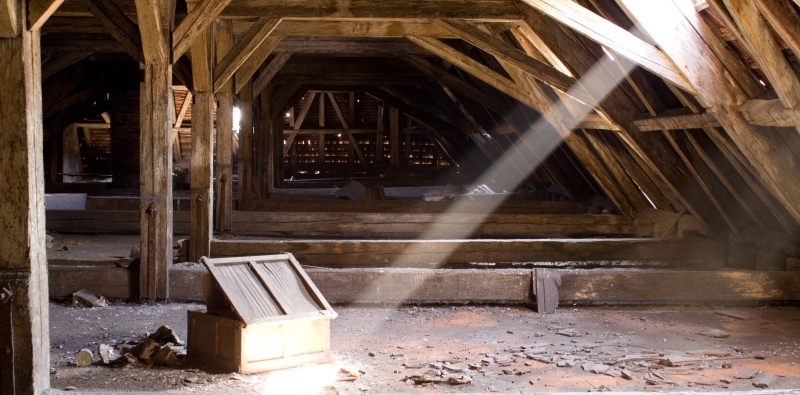Have you ever visited a community only to be bombarded by noise, alarms sounding, call lights beeping and overhead paging? It can be very stressful can’t it? So, let’s talk about alarms and why we use them! I remember years ago, prior to the creation of tab alarms, etc. when we went to a store called “Radio Shack” and purchased alarms to attach to resident chairs/beds to alert us when the resident attempted to rise. These alarms were intended to be used by runners, sportsmen, etc. who may be in the wilderness and need help. So imagine the decibel of sound that was emitted from these alarms, it was deafening! Then someone took pity on us and invented the resident care alarms with a lower decibel but noise just the same!
QA Reader
Recent Posts
Delirium, Depression and Dementia – Distinguishing the Difference
How often have you admitted a resident from an acute care setting with a recent diagnosis of dementia and antipsychotic medication orders? Did you ever wonder how a diagnosis was determined when the acute care stay was only 3 days long? It has always intrigued me as there is a distinct difference between each diagnosis, the risks associated with each AND the plan of care!
Discovering the Underlying Causes of Your Incidents
If you work in LTC communities, you understand the frustration and stress caused by adverse events. Quality scores, litigation, and resident safety are obvious concerns. Staff stress levels may increase, and the “blame game” is often an issue. To make matters worse, it can feel like incidents keep happening despite your best efforts. You — and your staff — may feel helpless to stop them.
But are adverse events really inevitable? In many cases, no. While it may seem like falls and other critical events happen without warning, there are often underlying causes that, if identified, could help you prevent these incidents. But how do you determine the root cause of an incident, and what do you do once you have identified it?
Topics: Quality Assurance
2 Simple Steps to More Effective Staffing by Acuity
In a report by the OIG, in 10 sample states, inadequate staffing levels were identified as one of the major problems in nursing homes. This problem is nothing new, and it's no secret among assisted living communities. The real secret seems to be how to make sure you have adequate staffing to reduce adverse events and fall-related injuries.
Topics: Administration, Patient Care
Best Practices for Treating Alzheimer's Disease Non-Medically
Many assisted living communities have adopted Alzheimer's programming that helps manage residents' behaviors without using antipsychotic medications. However, it takes time to develop a successful treatment program, and you'll probably have as many failures as successes at the outset. In addition, not relying on these drugs means residents may become agitated more easily. This can be very stressful and distressing for your nursing staff to deal with.
Topics: Patient Care
In long-term and post-acute care communities, hiring good nurses is only one step towards success. The challenge is often keeping great caregivers once you have them.
High staff turnover is a frustrating and costly reality for many senior living communities. Not only does it cost you time and money to train and retrain staff as they come and go, but a lack of consistency in nurses and caregivers can make residents and their families — and even other staff — feel uneasy.
For these reasons, keeping your staff from leaving should be a priority. But if you’re already offering them good pay and benefits, what else can you do?
Topics: Administration, Patient Care
Fewer Falls, Fewer Lawsuits: 3 Steps to Get There
Your fall prevention plan is executed perfectly, with exercise classes, non-slip floors, walking aids, and adequate lighting. So why aren't your fall rates where you want them?
It takes more than a safe environment and great staff to slash incident rates and avoid potential litigation. Better QA reporting and accessible, clear incident data could give you the power to prevent falls and improve the care you provide in your communities.
Topics: Quality Assurance
3 Things Your Nurses Need to Provide Better Senior Care
Though any nursing job takes skill and compassion, the long-term care sector often has the most fragile patients—and therefore, one of the most challenging assignments. The nurses at ALFs, SNFs, and CCRCs in particular need to be on top of their game so they can help prevent adverse events like falls and be responsive and calm when incidents occur.
You may hire the best nurses, but this isn’t always enough for high-need populations. What can you do as an organization to help them improve the quality of their senior care each day?
Topics: Patient Care
Real Life Incident Reporting: Quality Care in a Growing Community
Many senior living communities find that organizational growth is both a reward and a challenge. While your hard work has enabled you to expand your services and improve your market share, you may find that keeping up with quality measures becomes more difficult. Advantage Living Centers (ALC), a 12-community organization based in Michigan, became fully aware of these challenges during a period of growth. ALC wanted to find a way to reduce incidents, improve care, and implement a consistent tracking system without losing momentum across their organization.
Topics: Case Studies, Incident Reporting
The OIG Says Your Adverse Events Were Clearly Preventable
A study conducted by the Office of the Inspector General (OIG) from 2008-2012 identified that an estimated 22 percent of Medicare beneficiaries experienced adverse events during their SNF stays. An additional 11 percent of Medicare beneficiaries experienced temporary harm events during their SNF stays. Physician reviewers determined that 59 percent of these adverse events and temporary harm events were clearly or likely preventable. They attributed much of the preventable harm to substandard treatment, inadequate resident monitoring, and failure or delay of necessary care.
Topics: Risk Management, Quality Assurance










